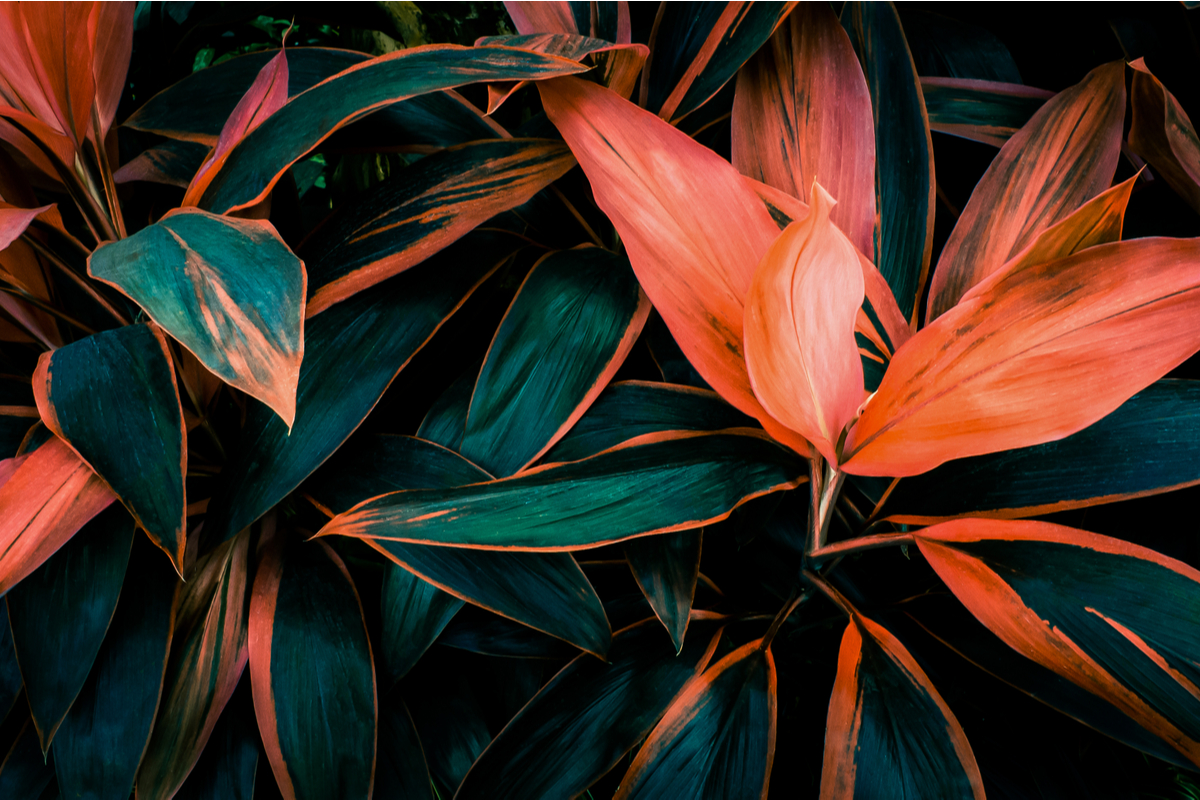Cordyline plants are outdoor/indoor plants with spear-shaped leaves. Their foliage has a leathery texture, and you can find them in a variety of colors including red, purple, yellow, and green. As an indoor houseplant, they’re fairly simple to care for, mainly needing a lot of light and a warm space. Cordyline plants are often mislabeled as dracaena, which is a similar-looking, common houseplant. Because nurseries use different labels for naming cordyline, this can get quite confusing. So let’s talk about the different kinds of cordyline plant varieties.

Different cordyline plant varieties
There are fifteen different cordyline varieties, all possessing the leather-like foliage. Some of them grow fragrant flowers that are cup-shaped and followed by a kind of berry (that can be either white, red, blue, or purple). These flowers are often white to pale lavender in color, and it’s typical for a flowering to occur more in outdoor cordyline plants than ones that are houseplants.
Some are more commonly grown than others, like the C. australis (which resembles a yucca plant) and the C. terminalis that comes in many different colors. Cordyline plant varieties are called by many other names, including “Ti,” “Tricolor,” “Firebrand,” and “Rededge.”
Where to buy cordyline plants
Purchasing a cordyline plant of any variety will vary from location to location. One of the best ways to track one down is by contacting local nurseries and plant stores to see if they have any in stock. Since cordyline is such a common houseplant, it’s likely that you’ll be able to find one with ease; however, if you can’t, there’s always the option of purchasing a cordyline plant variety from an online seller. Online plant sellers have increased in popularity, but there’s still a risk. Shipping a live plant is never a guarantee, as so many things can happen in transit that could affect your plant. To that effect, it’s often a better investment to shop locally first.

Caring for your indoor cordyline
Cordyline plant care varies because there are so many different varieties. There are some general rules of thumb to follow, but be sure to look up the specific needs of your variety in order to provide the best care possible!
In general, cordyline plants need bright light. Some prefer indirect/filtered lighting while the green-leaved varieties prefer more direct lighting. As with most indoor plants, you’ll want to use a well-draining potting mix and put them in containers that have good drainage. Both will help you avoid overwatering your cordyline. The tricky part is that most varieties do prefer a moist soil, so it will be a delicate balance to keep the plant from being overwatered. To achieve that, water only when the surface of the soil is dry, and remember that you’ll need to reduce watering in the winter.
Trimming your cordyline plant
Mature cordylines, when trimmed, will often have stems of ranging from three to four feet tall. In perfect conditions, cordyline plants can grow faster than their stem can support, so it’s important to trim the leaves in a staggered way. This will allow the cordyline to continue growing stronger and focusing its energy on supporting the right amount of leaves instead of too many. If it has too many, it could start to bend or become spindly. When trimmed well, a cordyline will be cloaked in leaves from top to bottom—so don’t trim them all away!
Can indoor cordyline plants get pests?
As with any houseplant, indoor cordyline plants can still be infected by pests. Since they’re inside, this often happens when an already-infected plant is brought into your home or when a small pest attaches to you or a pet. The most common pests that infect cordyline plants are spider mites, mealybugs, thrips, and scale insects. There are some natural insecticidal soaps
Because cordyline plants come in many different varieties, you could easily get some to change up the look in your space. They’re relatively simple to care for, and as indoor plants, pests aren’t a huge cause for concern (though you should still be cautious).


